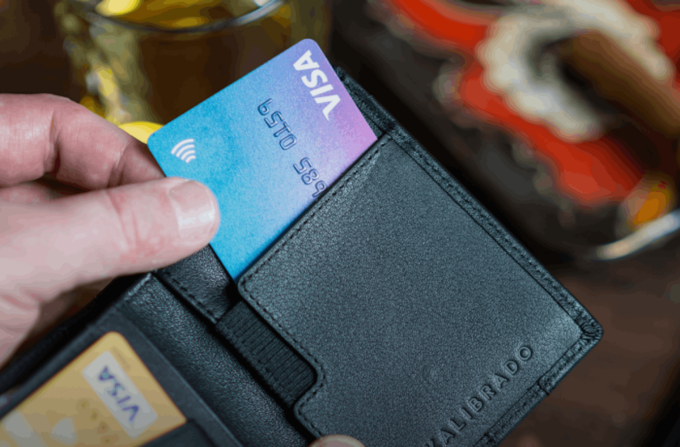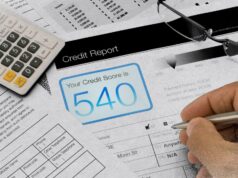Sadly, you can’t always do everything under your own steam. Sometimes, you need an extra financial push to help you take on a variety of tasks, goals, and expenses.
Whether you have a major home renovation in mind, or you’re saddled with an unexpected household repair, a line of credit can provide the financial assistance you need. Unlike personal loans that provide a lump sum, a line of credit allows you to access money as needed, giving you control over your borrowing and repayment.
Before you jump into applying for one, it’s important you know what this option entails. Below, you’ll find all the important details on a line of credit.
What is a Line of Credit?

A line of credit is a revolving financial product. This makes it different from your typical personal loan. Rather than getting a lump sum of cash you have to pay back by a certain date, you receive a limit. You can draw against this limit whenever you want and in as many increments as you want, provided you stay within your limit.
One of the biggest advantages of this financing option is how interest applies. You only get charged on the amount you use, not your total limit. Another benefit is its revolving nature. As long as you pay off your balance, you can borrow up to your limit multiple times.
Secured and Unsecured Borrowing Options
Like most borrowing options, a line of credit comes in two forms: secured and unsecured.
1. Secured
A secured credit line requires you provide an asset, typically a vehicle or a home, as collateral to secure the loan.
In the event of non-repayment, the lender has the right to claim this asset. Due to this added security, banks and creditors typically offer lower interest rates, higher spending limits, and more favorable terms for secured credit lines.
The Home Equity Line of Credit (HELOC) is one of the most popular secured lines. There’s more on that later, but it essentially utilizes the equity in your home as collateral, acting as a second mortgage linked to credit.
2. Unsecured

An unsecured line does not require any collateral. In this case, the creditor assumes the risk that the borrower will fulfill their debt obligations.
They determine whether you can handle your new line of credit by assessing your creditworthiness. Eligibility will vary greatly depending on where you apply. A lender like Fora shares their requirements conveniently on their website.
Generally speaking, a good credit score and consistent pay make it easier to apply for unsecured options. However, you might find other options as a bad-credit borrower online. A long-standing relationship with a bank or credit union can also improve your chances of approval.
Credit cards are the most common form of unsecured credit. You can use them to make daily purchases, and in many cases, you can accumulate rewards points by doing so. Personal lines of credit are another type of unsecured credit line, often used for specific projects such as home improvement upgrades.
The 3 Major Types of Lines of Credit
Under the umbrella of secured and unsecured financial products, you can find many different types of lines of credit. This article has already mentioned some of them early. Let’s examine the main three in greater detail.
1. Personal Line of Credit

A personal line of credit is an unsecured loan that relies on the borrower’s creditworthiness. It provides financial flexibility for emergency expenses, long-term projects, cash-flow management, debt consolidation, and other personal endeavors.
With a personal line of credit, you can access funds when required and pay interest only on the amount borrowed, making it a cost-effective solution compared to cards.
2. Home Equity Line of Credit (HELOC)
A home equity line of credit (HELOC) is a secured loan that leverages your home as collateral. It offers a revolving credit line based on the equity in the property.
HELOCs are commonly used for large home renovations, as you can borrow a larger limit than with personal lines of credit. Another bonus? The interest may be tax-deductible. The flexibility to draw funds as needed and pay interest only on the amount utilized makes HELOCs a popular choice for homeowners.
3. Business Line of Credit
A business line of credit provides working capital for businesses. It offers flexibility, allowing businesses to borrow and repay funds as necessary, up to the predetermined limit. Business lines of credit are typically unsecured, making them accessible to small businesses with limited collateral. They can be invaluable for managing cash flow, purchasing inventory, covering unexpected expenses, and seizing growth opportunities.
What Are the Benefits of Using a Line of Credit?

Obtaining a line of credit offers several advantages that make it an attractive financing option.
- Range of Interest Rates: Lines of credit come in a wide variety of rates. If you have an impressive financial profile, you might qualify for ultra-low competitive rates, making them a cost-effective option for borrowing. Additionally, interest is typically charged only on the amount borrowed, saving borrowers money on unused credit.
- Tailored Borrowing: Lines of credit allow borrowers to choose the amount they need within the approved limit. This ensures that they do not borrow more than necessary, preventing unnecessary debt and interest charges.
- Revolving Credit: As a revolving product, a line of credit lets you repay and reuse funds without reapplying for a new loan. As you make payments, the available credit is replenished, providing ongoing access to funds when required.
- Easy Application and Approval: Depending on the type of line of credit, the application process can be straightforward, and approval may be faster compared to traditional loans. Online lenders often offer more relaxed qualification criteria, providing greater accessibility to it.
Bottom Line
A line of credit promises greater financial flexibility and control. Whether it’s a personal line of credit for emergencies, a HELOC for home improvements, or a business line of credit for managing cash flow and business expenses, the benefits are numerous.
With lower interest rates, tailored borrowing, and revolving options, lines of credit provide a versatile financing solution. However, it’s essential you consider the lender’s terms, fees, and repayment schedule before committing to a line of credit. By understanding your financial needs and researching reputable financial institutions, you can make an informed decision and harness it.










